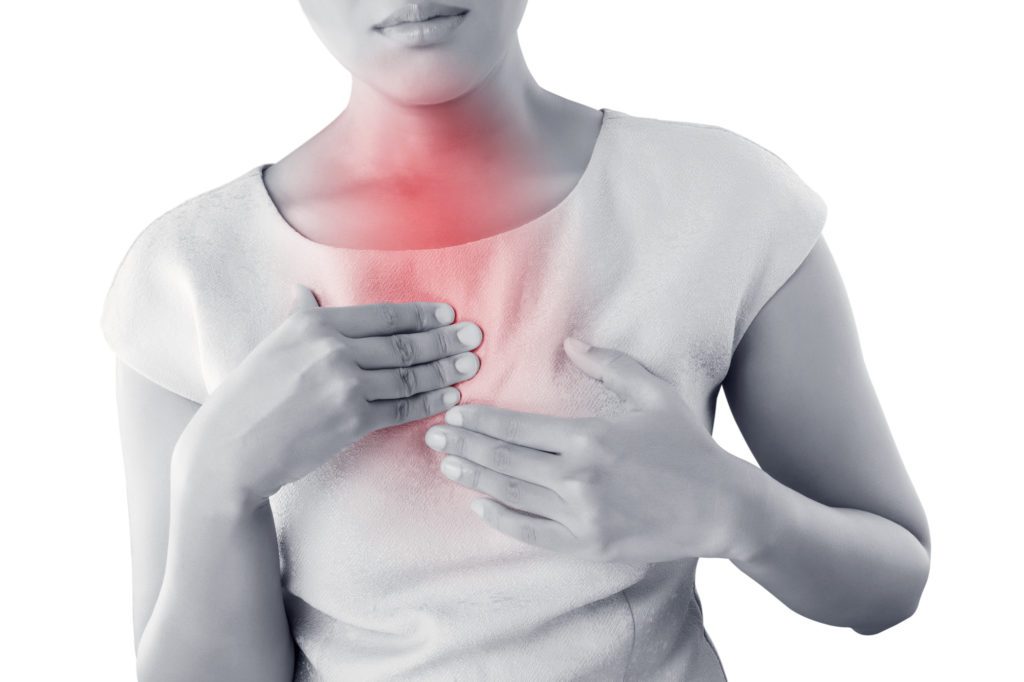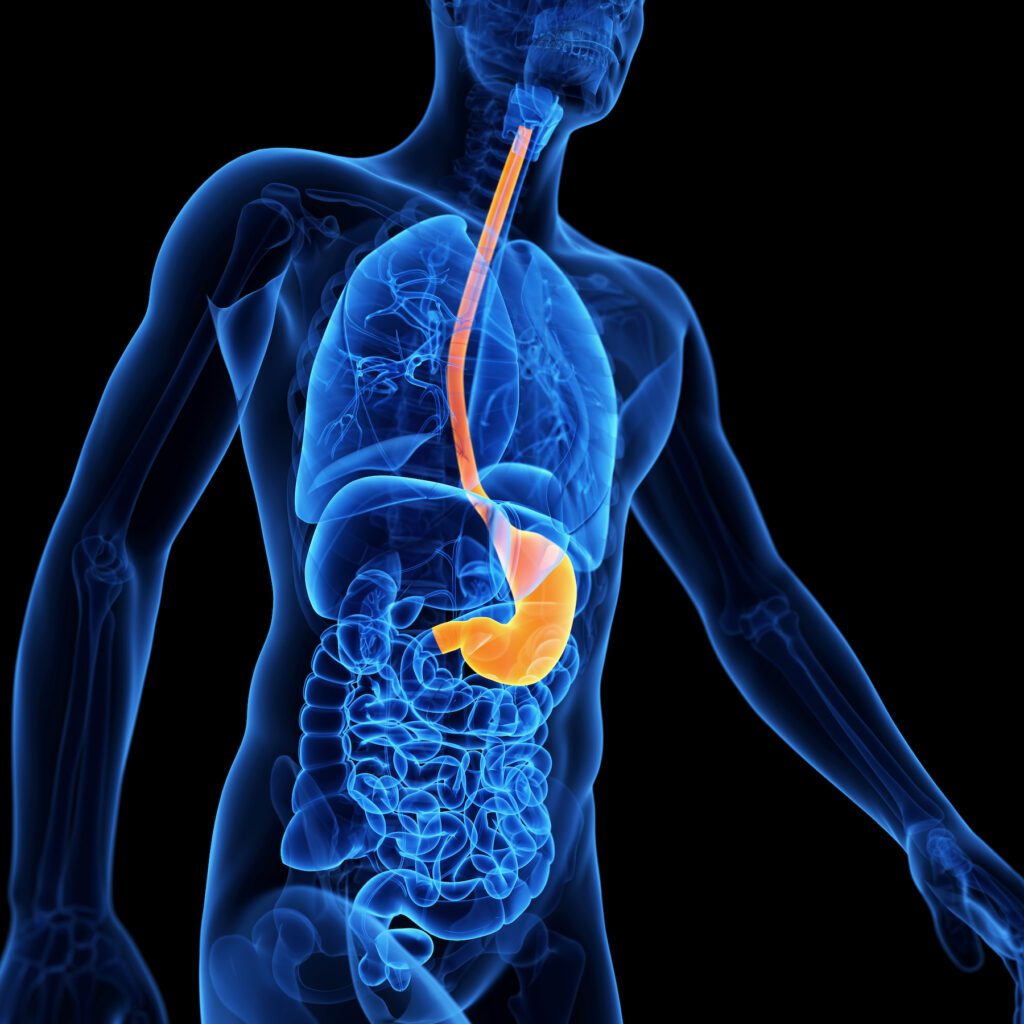
5 Steps to Get Rid of Acid Reflux
Do you suffer from heartburn? If you do, you’ll know about it. Soon after you’ve finished your food, the burning sensations start in your chest. It can be more than uncomfortable and get worse when you lie down. It has you reaching for indigestion relief such as Gaviscon or perhaps your GP has prescribed you with a PPI medication such as Omeprazole or Lansoprazole. These provide some relief but you know more is coming when you next eat. This blog will get you on the road to comfort. Read on for 5 steps to get rid of acid reflux.
What is acid reflux?
Before we dive into 5 steps to get rid of acid reflux, let’s look at what it is. Our stomachs are acidic. In fact, it is the only acidic place in our body and it is made to be able cope with the acid without any discomfort. The rest of our body is not made to cope with acid. Therefore, if acid from our stomach ‘refluxes’ into our oesophagus (the tube connecting mouth to stomach), then it literally burns – hence the name ‘heartburn’. So it is not the acid per se, it is acid in the wrong place.

Why does acid reflux?
There is no one simple answer to this question. We have a one way valve between our oesophagus and our stomachs, which should only allow food in. Nothing should be allowed to move the other way – other than wind when we burp or if we need to get rid of the contents of our stomach. Certain things can make acid reflux more likely however, such as:
- Smoking
- Pregnancy
- Stress and anxiety
- Hormone imbalances, such as the fluctuations of oestrogens that often occur in peri-menopause
- Hiatus hernia – where part of your stomach moves up into your chest cavity
- Certain trigger foods
- Low stomach acid
How can low stomach acid be associated with acid reflux?
The last one on the list might feel a bit ironic. How can low stomach acid be associated with acid reflux? Well, if we don’t have good levels of stomach acid, then our digestion is compromised. We struggle to break down our food, particularly proteins, and we feel full for a long time after eating, as our stomach struggles to deal with the meal. We might get bloated, as wind builds up in our upper digestive tract. This happens because food is not being broken down and absorbed efficiently due to low stomach acid levels. As the wind builds up, it can literally blow back up the digestive tract and into the wind pipe, taking some of the acidic contents with it as it goes. Even mildly acidic stomach contents will cause heartburn.
How to Get on Top of Acid Reflux
It is not a good idea to let acid reflux carry on for any length of time, as it inflames the oesophagus and eventually, it can lead to erosion of the tissue. Hence your GP’s desire to bring you some relief with medication. However, we do need stomach acid. It plays a key role in our digestive function. Without it, we struggle to digest proteins, are more vulnerable to infection coming in from food and are more prone to bloating. Over time, we start to feel fatigued and depleted. You can read more about acid reflux medications and the impacts they have on digestive function in this blog here.
We do need stomach acid. It plays a key role in our digestive function
There is a lot you can do to get on top of acid reflux. If you are taking medications to manage the condition, it is best to work with a BANT registered nutritional therapist who will be able to work out what the likely triggers are for you, based on your case history. Working in collaboration with your GP, a nutritional therapist can improve your digestive function which should allow you to transition off PPIs or other indigestion relief. If you would like to book a free call with Clare, you can do that here.
5 Steps to get rid of Acid Reflux. No. 1 – Reconnect
Slow down and reconnect with your food. The process of selecting fresh ingredients, anticipating, preparing, smelling and sampling your food gets your body ready for digestion. Our mouths water and the saliva gives a message to our stomach – food is on its way! Convenience food, which is ready with the piercing of a package and the ping of a microwave, takes that connection with food away. Fresh food doesn’t need to be fancy, just wholesome ingredients combined into a delicious meal.
The process of selecting fresh ingredients, anticipating, preparing, smelling and sampling your food, gets your body ready for digestion
5 Steps to get rid of Acid Reflux. No. 2 – Chew
Chew your food. This might feel a bit too simple but you’d be amazed at how little we chew. It is very easy to be mindless whilst eating – scrolling through your social media feed, writing emails at your desk, walking along the road.
Stop. Move away from your work place and be present. Be French!
The French are masters of making every meal an occasion. Table cloths, fresh ingredients, taking time. And then chew. Really chew. It varies with what you are eating, but you don’t want any lumps in there when you swallow. This gives your stomach an easy job, as you’ve done some of the digesting in your mouth before it even gets there. And our saliva contains enzymes which begin the process of breaking your foods down for digestion, so a proper chew allows those to work well too.

5 Steps to get rid of Acid Reflux – 3: Gaps
Leave some time between your meals. You should be able to go 4-5 hours between meals without snacking. This relies on you eating well at the 2-3 main meals of the day – good protein, some healthy fat, masses of colourful foods (read more about that here). Then in-between, leave a gap. You’ll be ready to eat by then and properly hungry. There is nothing like hunger to make food taste great! It also gives your digestion a time of rest, rather than constantly being on duty.
There are some exceptions to the above – if you are pregnant, you may need to eat smaller meals more often, particularly in the last trimester, when your stomach starts to have competition for space. Also those with a history of an eating disorder should be mindful of any food restriction. Always consult with your GP before making dietary change if you are concerned.
5 Steps to get rid of Acid Reflux – 4: Triggers
Some foods are common triggers of acid reflux. It can be worthwhile avoiding some or all of the following to see which you might be reacting to:
- Spices
- Sugary foods
- Highly processed food
- Fatty meals
- Tomatoes
- Caffeine
- Alcohol
- Onions
- Peppermint
Everyone is unique when it comes to trigger foods. If you are feeling a bit confused about what yours may be, then doing an elimination of the above foods will be worthwhile as a short term test to see if it makes a difference. Then reintroduce each one to see which may be causing your problems. You may find that you have some tolerance to say, caffeine in a coffee and that 1 cup is fine, but 2 is too much.
5 Steps to get rid of Acid Reflux – 5: Sing
One of the main nerves in the body is called the ‘vagus nerve’. Vagus means wandering and indeed that is what it does, connecting the brain, heart and digestion. It forms a major part of the parasympathetic nervous system which takes care of rest and digest processes – so the opposite of ‘fight or flight’ functions controlled by the sympathetic nervous system. Damage to the vagus nerve can happen from infection, surgery or certain conditions such as type 2 diabetes. One of the outcomes of this damage can be acid reflux.

So, what can you do to stimulate the vagus nerve and get it working properly again? Strange as it might sound, singing – with some vigour and enthusiasm – stimulates your vagus nerve in your throat, lungs and oesophagus and can help with getting the nerve operating again. So, grab some of your favourite tunes and belt out a song!
These steps may go some way to getting your digestive function back on track and may help you to feel more comfortable after eating. If you want to dive in deeper, especially if you are on some form of acid suppressant, then book a free call with me. You can tell me what is going on and we can work out whether I can help. You can book these calls here – or visit my website and click on any of the ‘Book a Free Call’ buttons. Or reach out by email clare@integral-nutrition.co.uk . There is no pressure with these calls, just a friendly chat to see if I can help you get your health back on track.
